

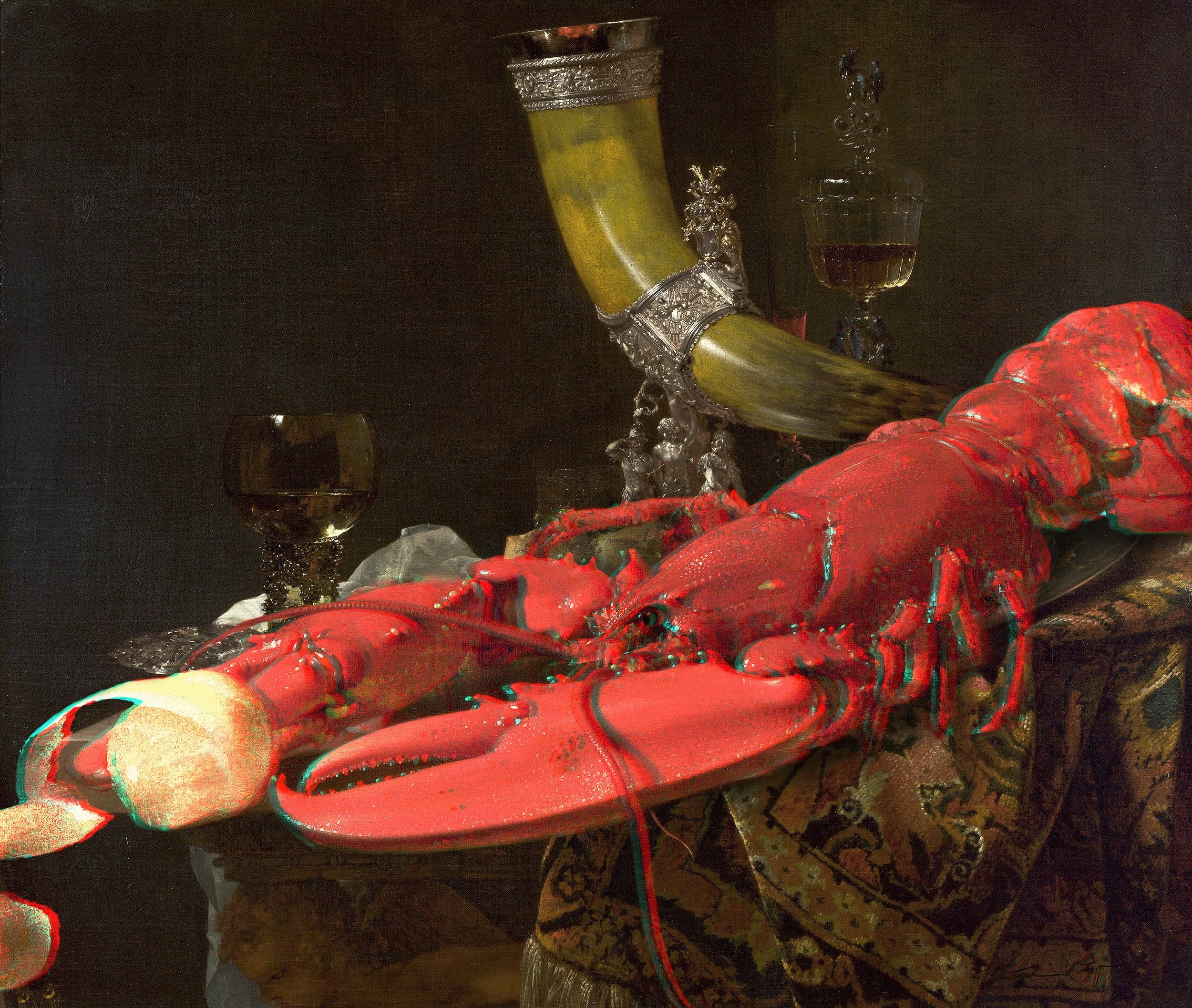
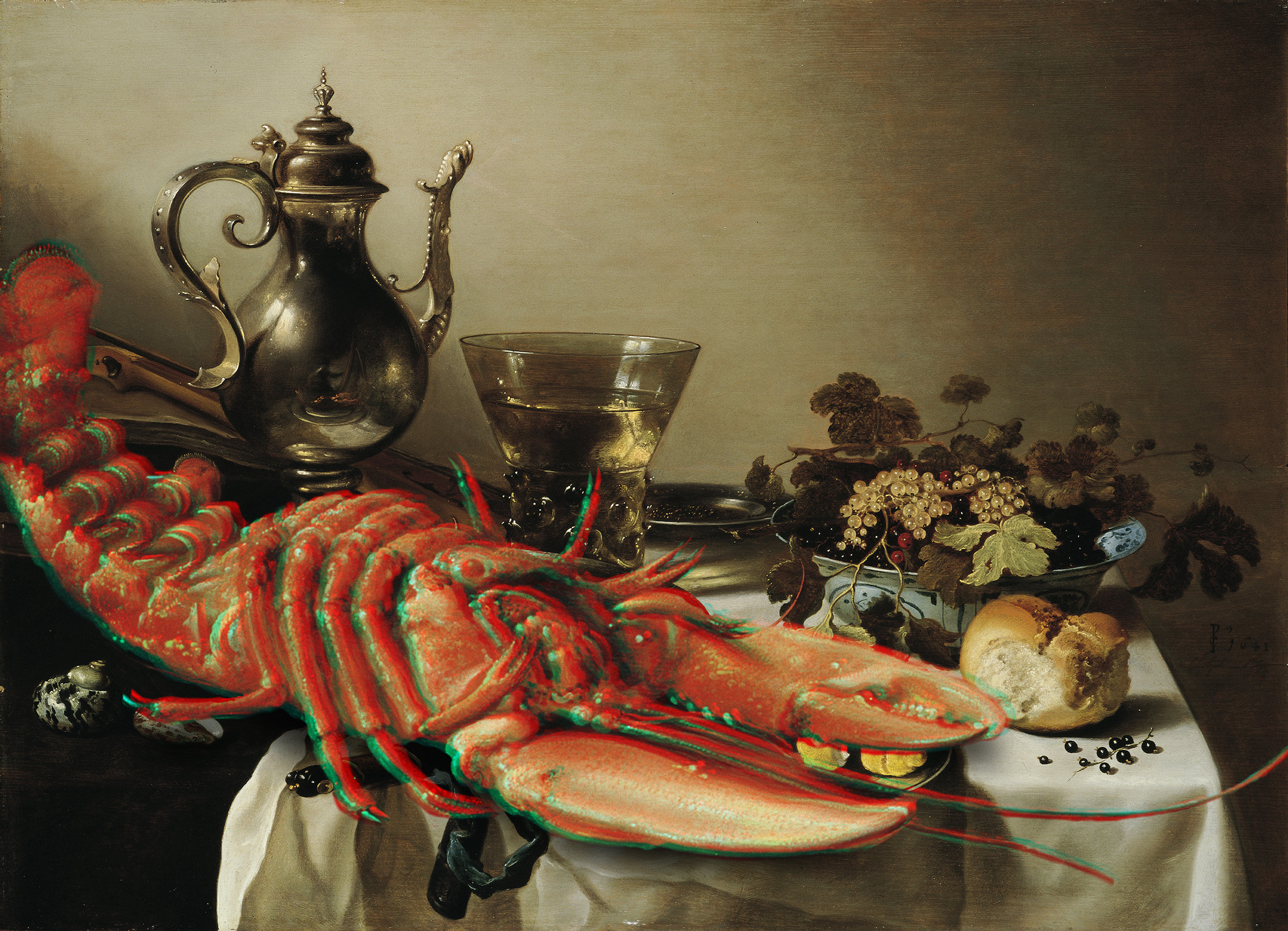
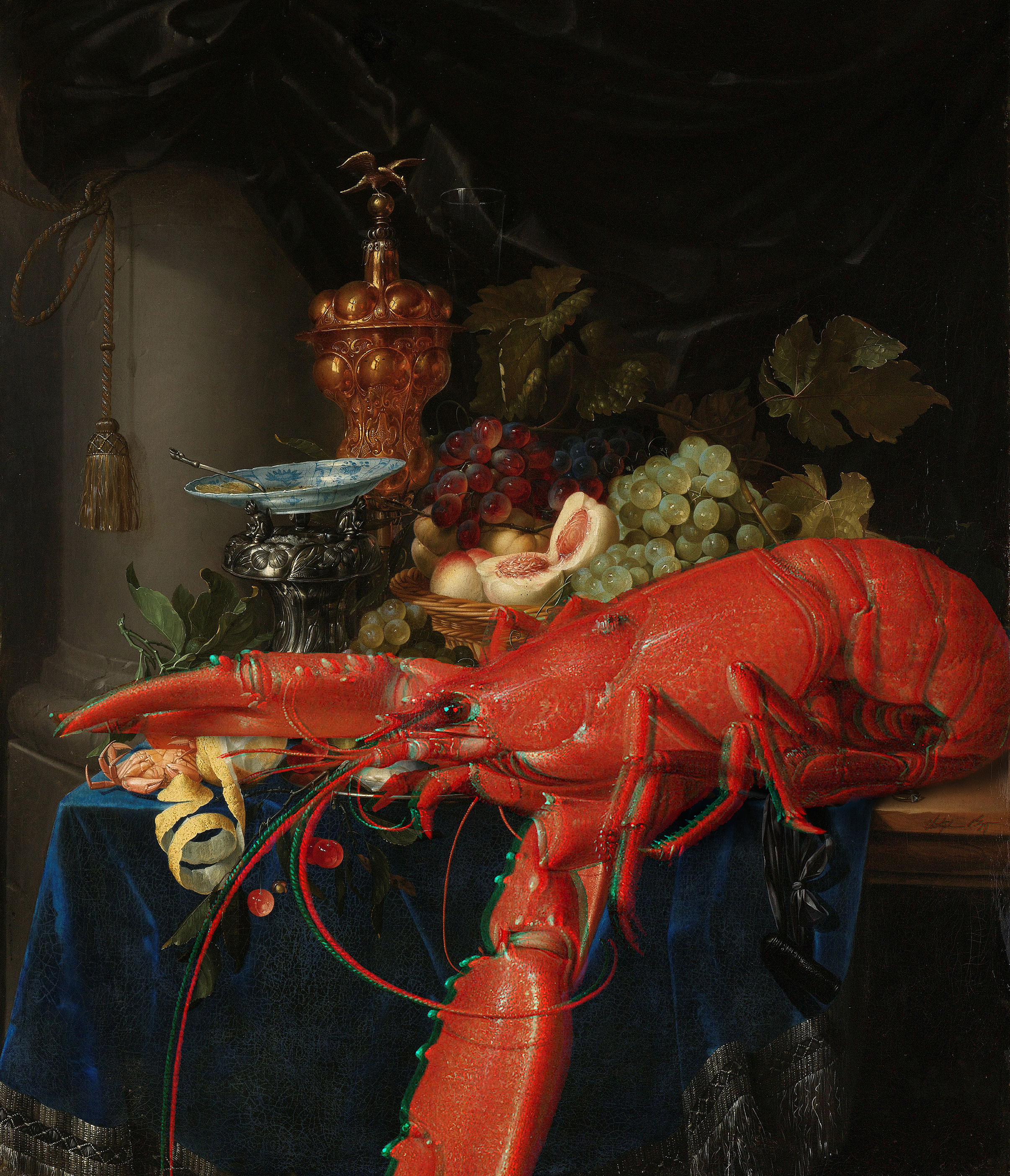
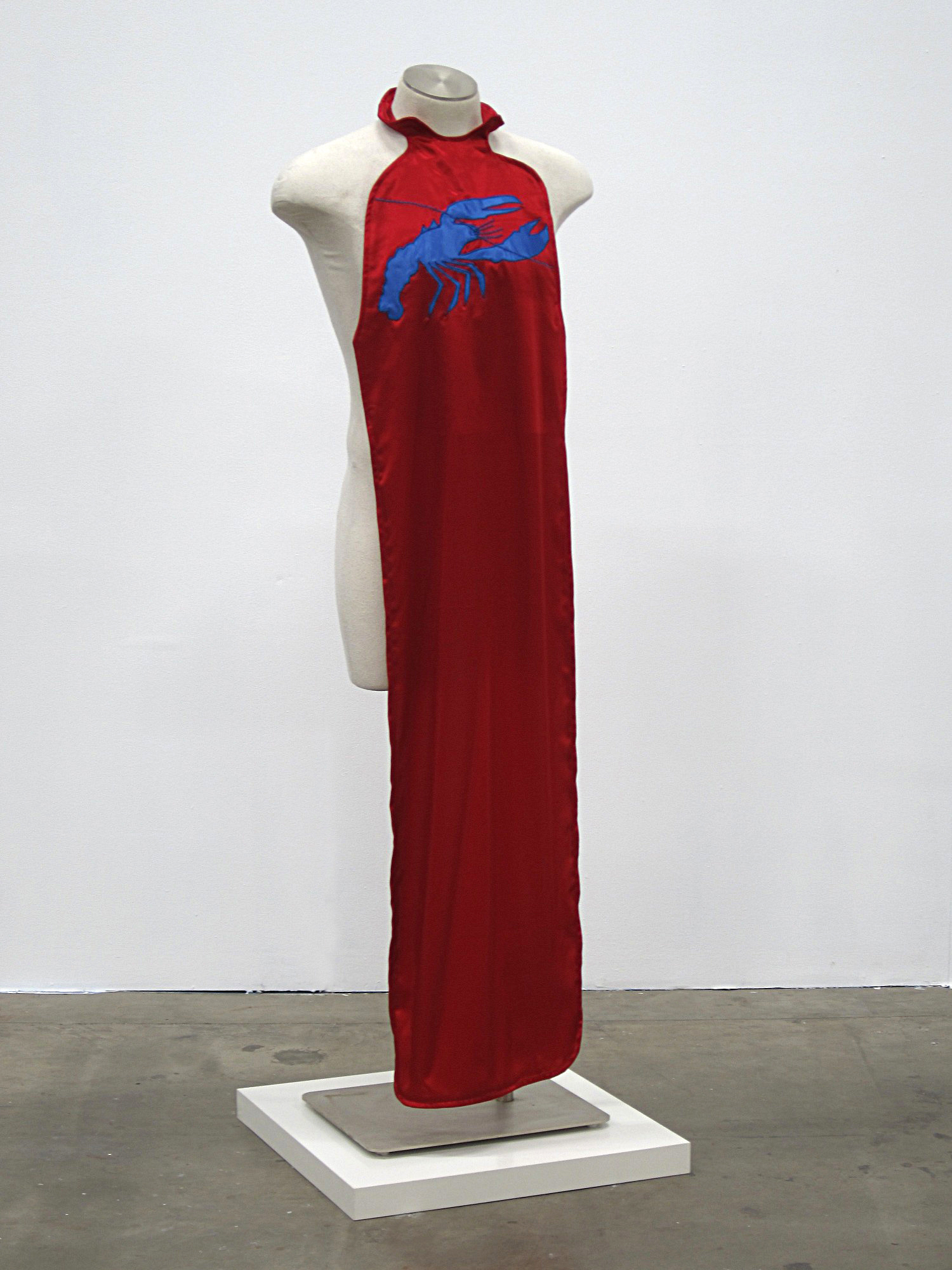
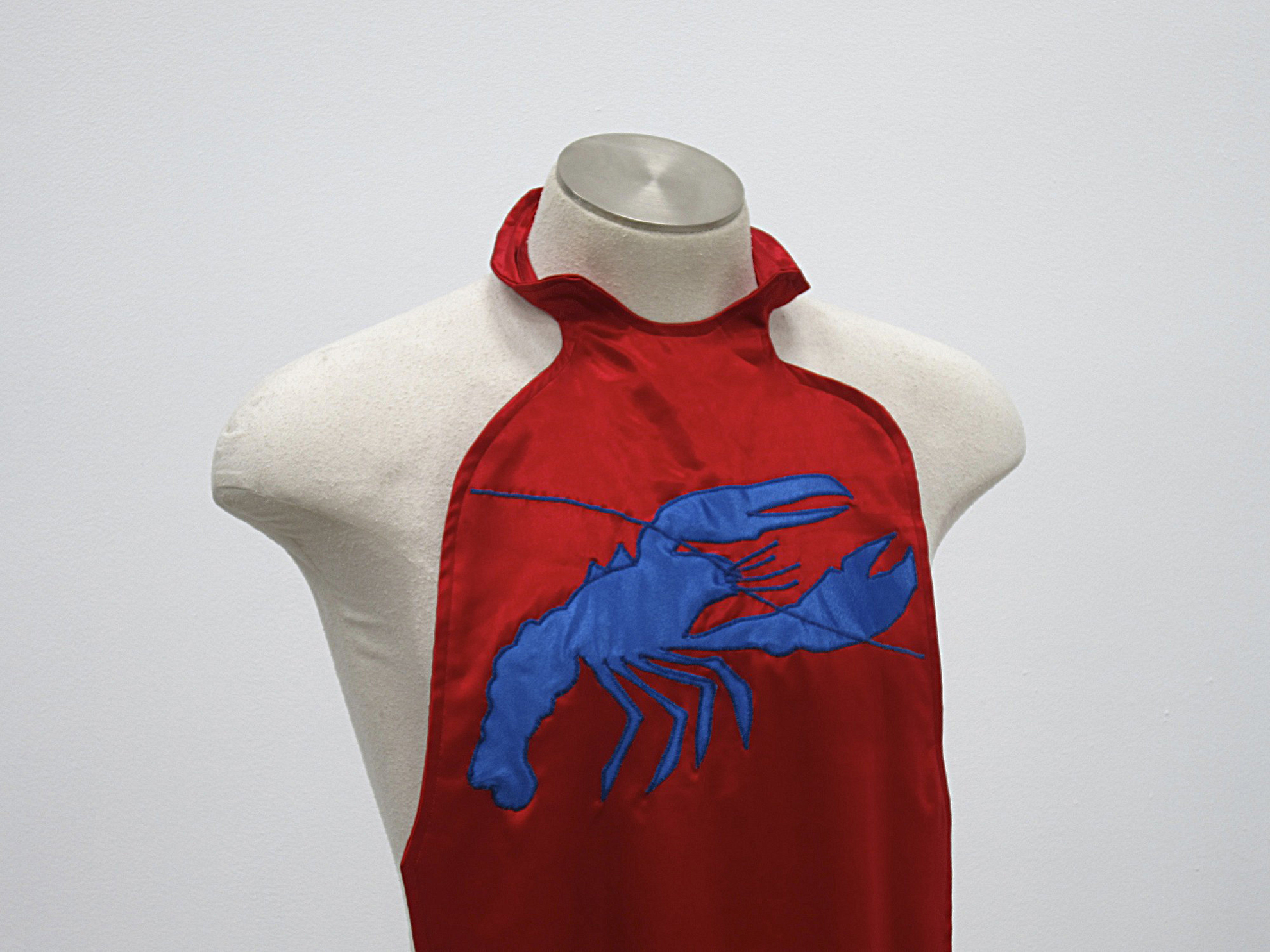

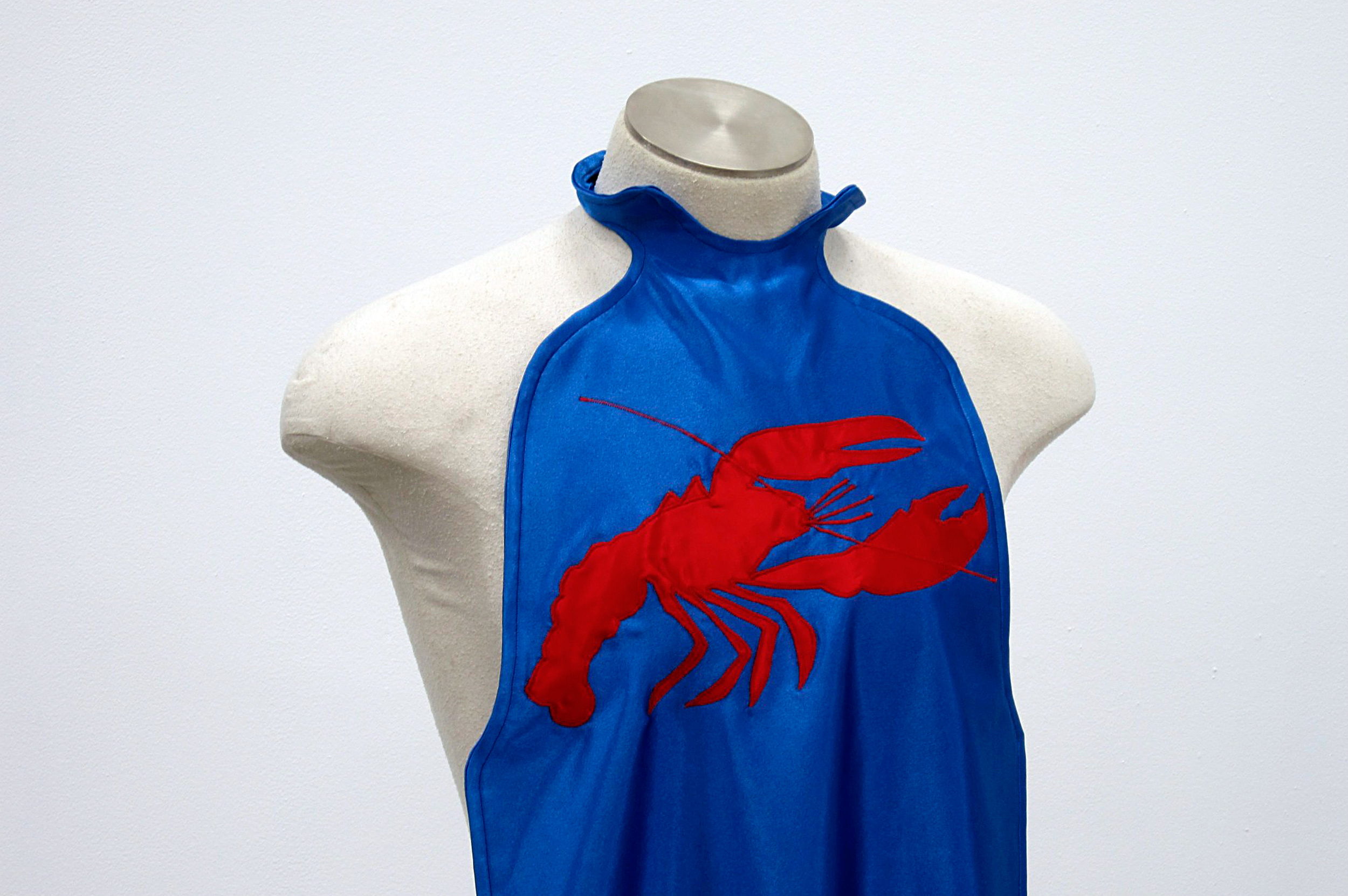
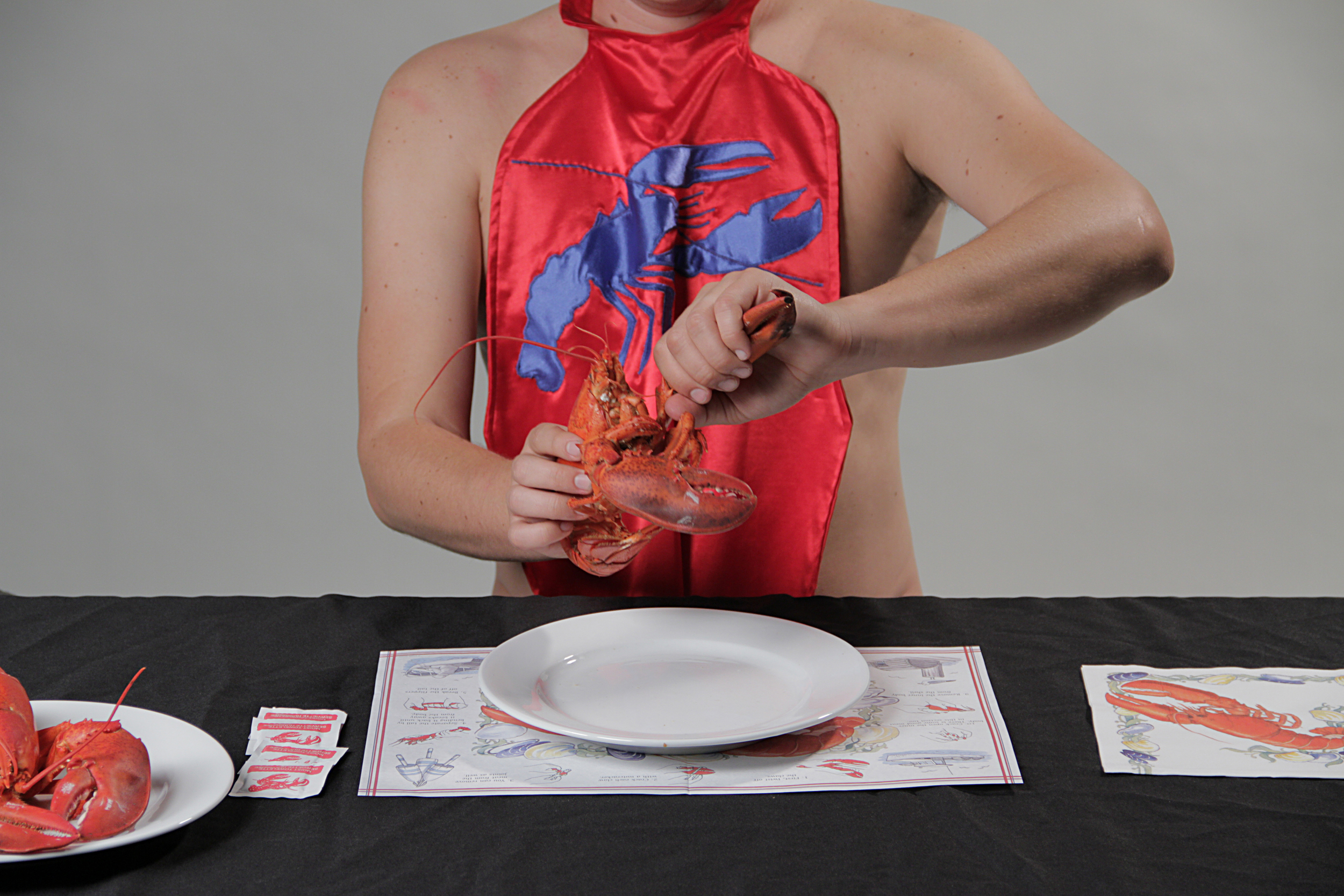

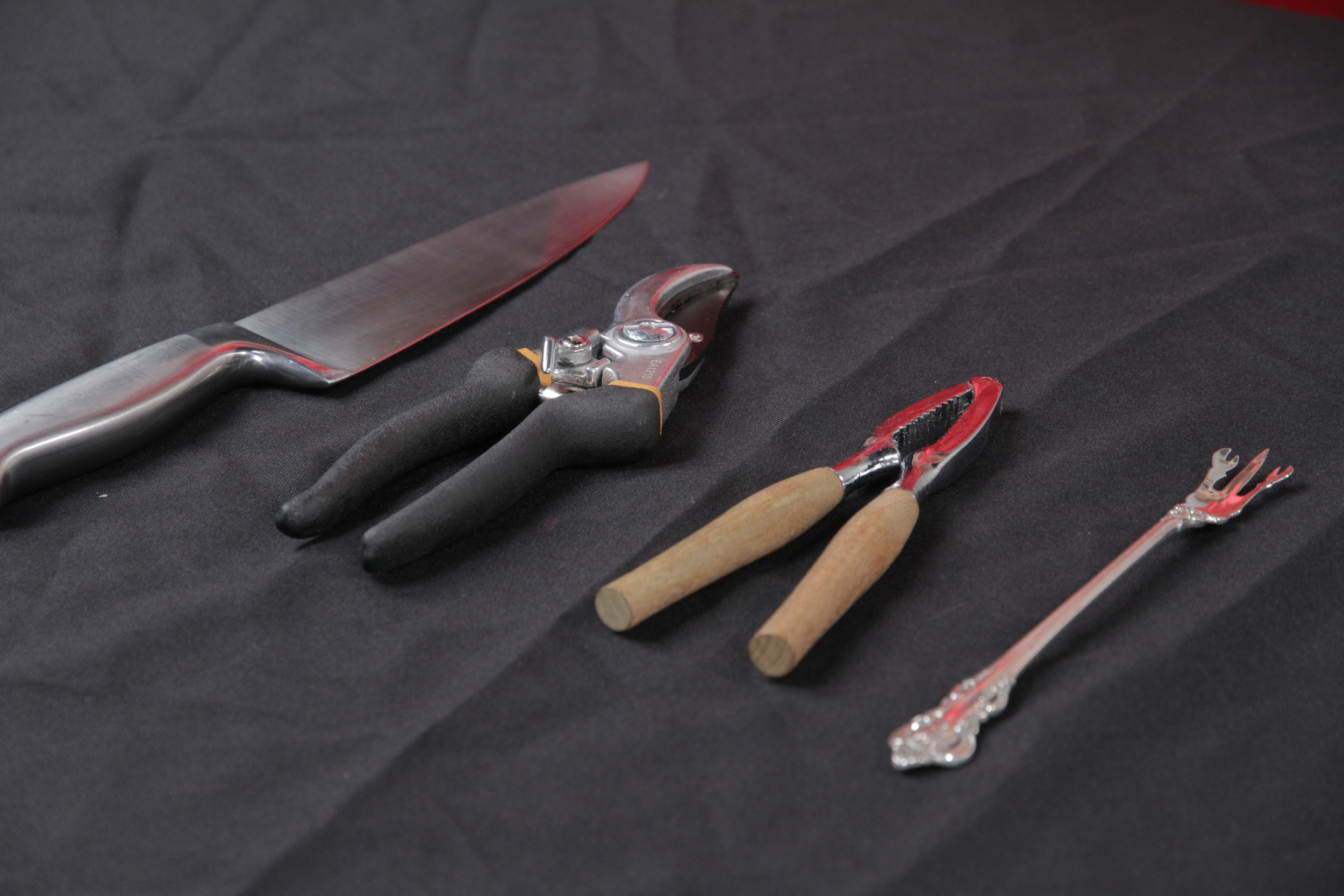
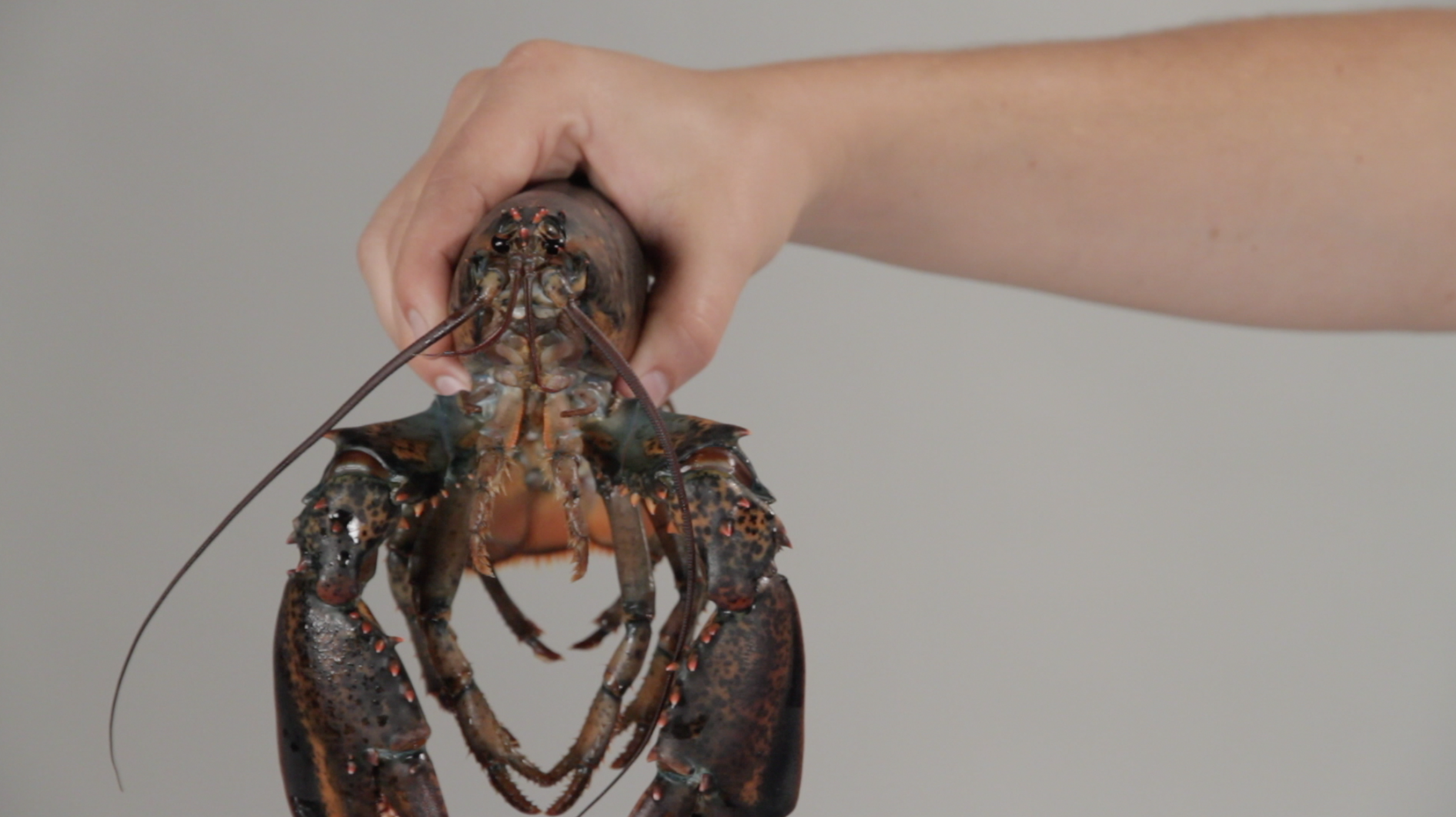
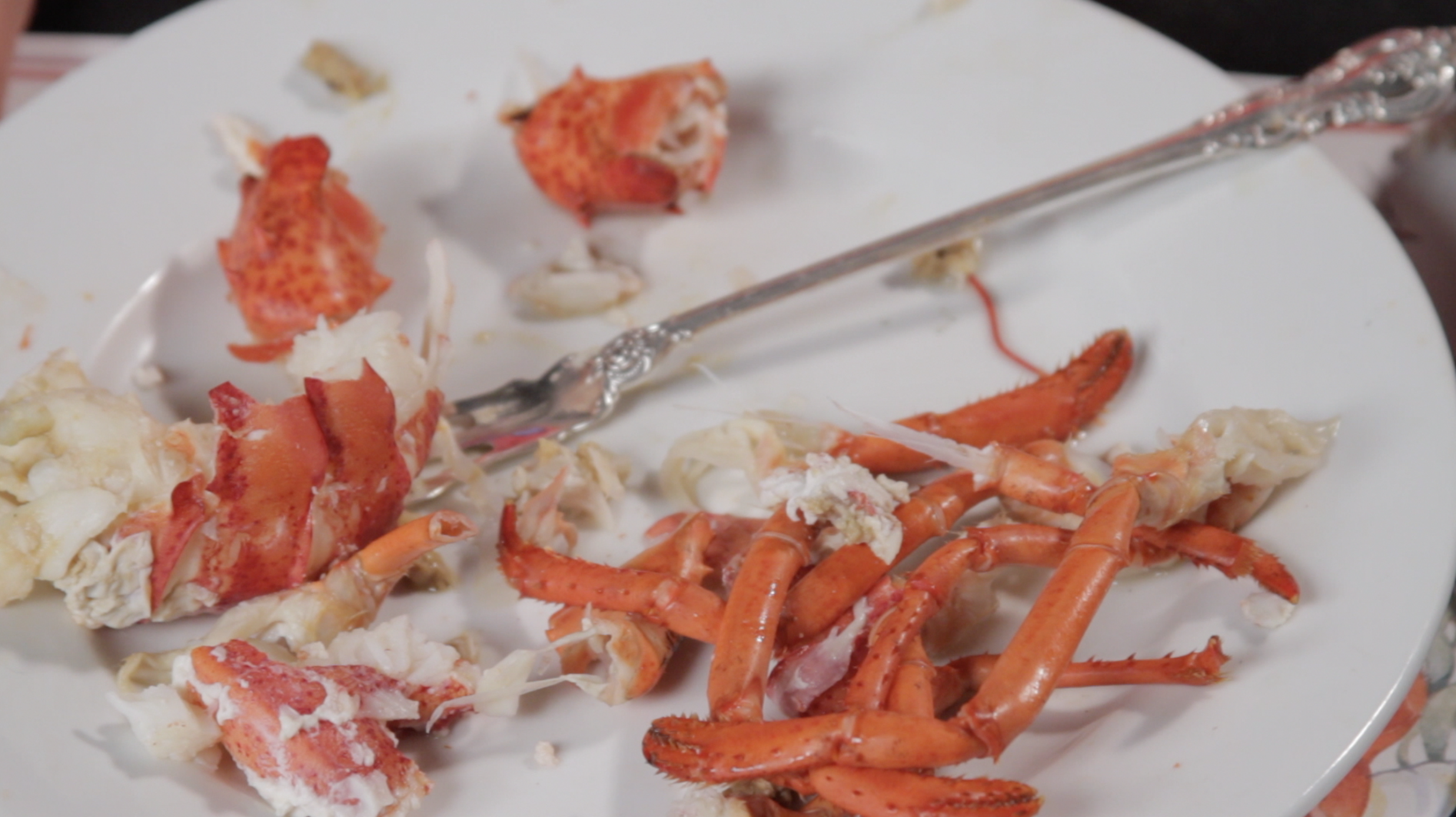
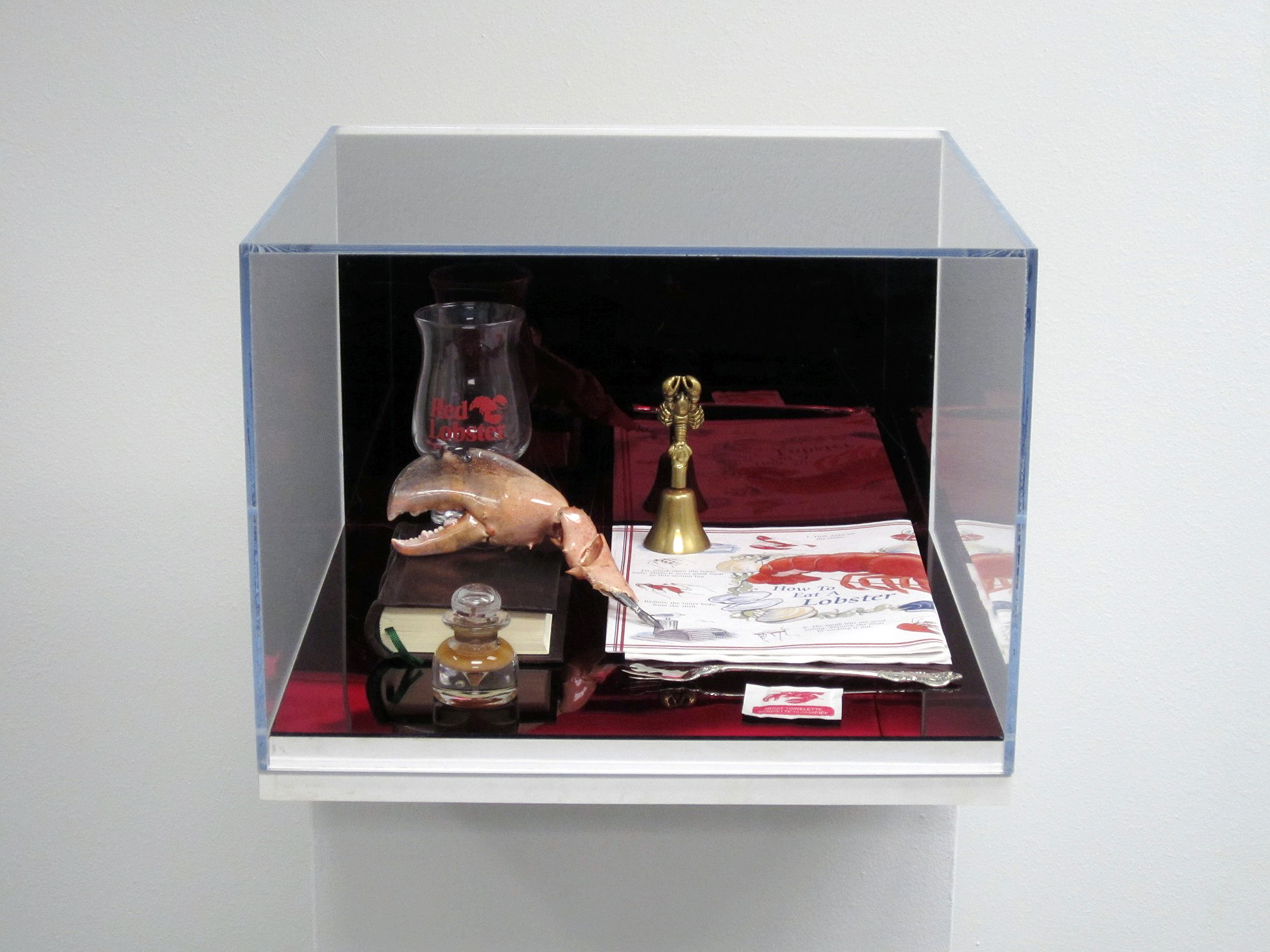
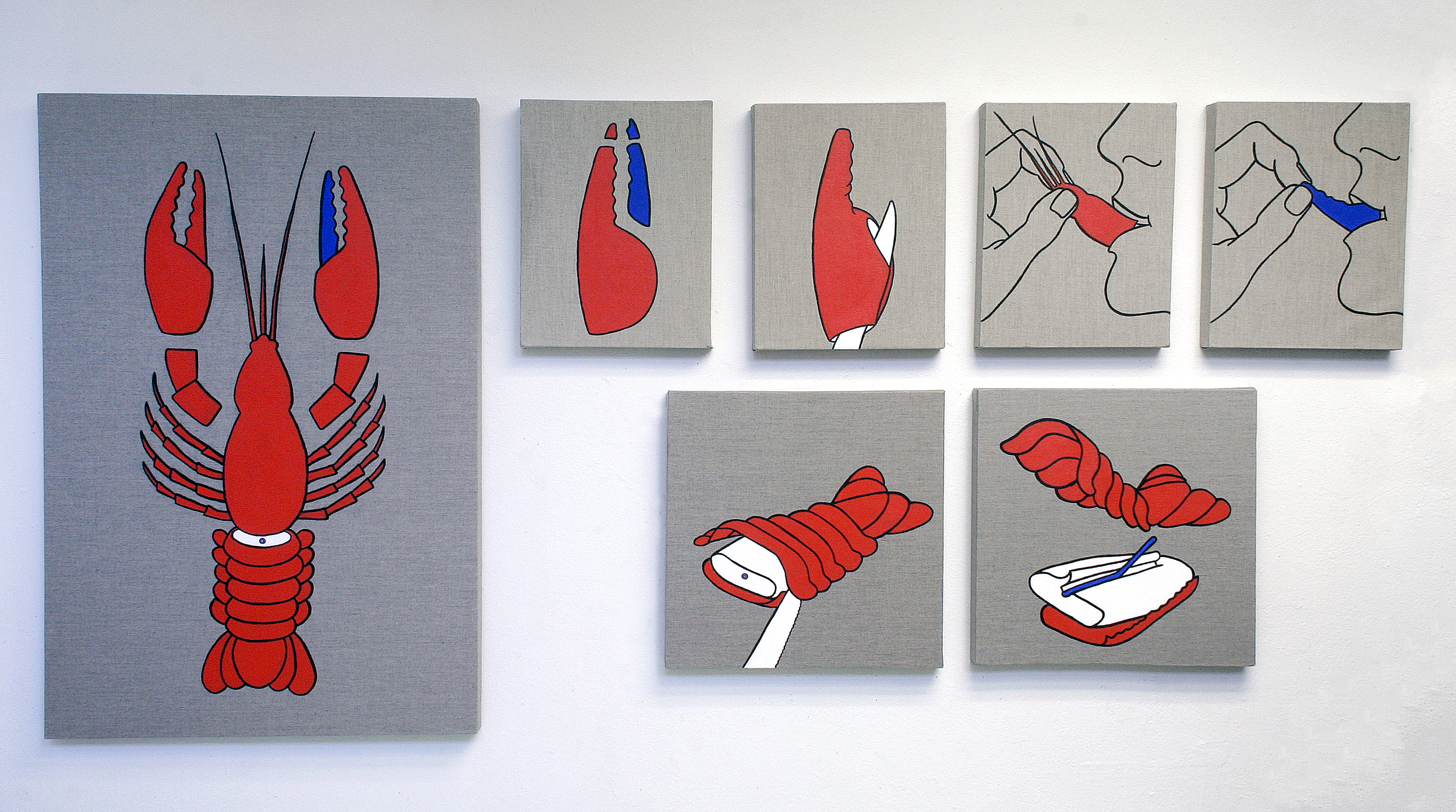

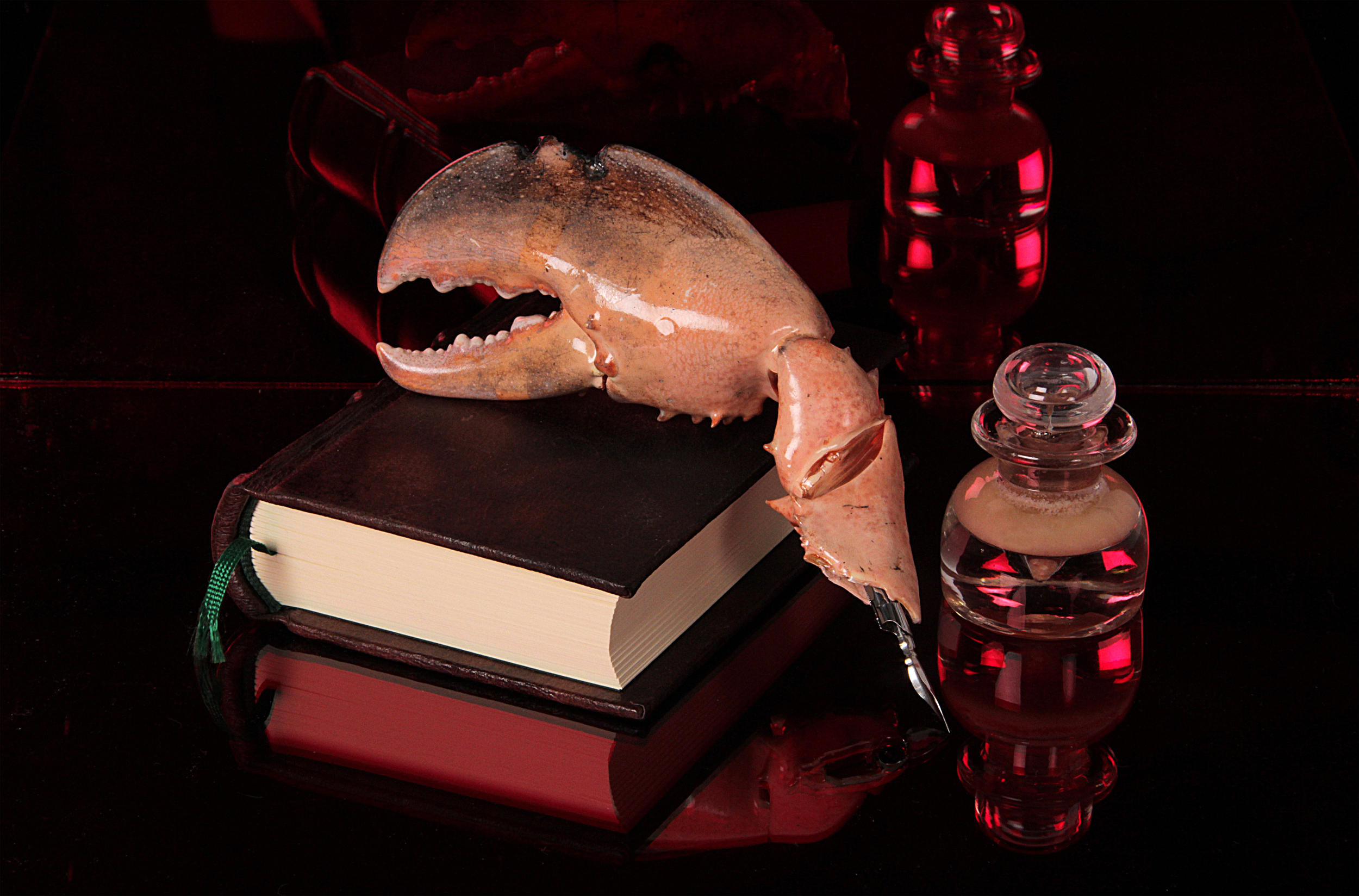
How to Eat Lobster
2011
HD video, duration 10 minutes
Photo and video courtesy of Sean Flaherty
For The Seafood Lover in You
2017
Digital Video
9:58 minutes (loop)
The Claw and Cracker Club is an interactive body of work that explores the politically charged and ritualized consumption of lobster. Created by artist Christopher Reynolds, the installation comprises paintings, sculptures, photographs, sound, scent, video, and other mixed media that together investigate this controversial culinary subject. As a commodity, the lobster has a tumultuous history, laden with stigma related to class dynamics and global economic structures. Once considered an undesirable crustacean—abundant and inexpensive—it was routinely served to servants, enslaved people, and prisoners. Its transformation into a gastronomic symbol of luxury and wealth occurred only with the advent of commercial canning, the rise of railroad transport, and its designation as a non-rationed food during World War II. Through this evolution, the so-called “cockroach of the sea” molted its negative associations to become a staple of bourgeois fine dining.
The Claw and Cracker Club reflects this complex cultural shift by juxtaposing the lobster’s opulent presentation in elite dining contexts with its mass-market spectacle in chains such as Red Lobster. The installation and accompanying menu offered to “members” of the Club highlight this spectrum—from high to low class—through ingredients, materials, found objects, and the performance of a highly orchestrated ritual of consumption.
Few animal proteins today require such direct participation from the consumer in both the selection and killing of a live specimen. Lobster remains one of the last meats consumed in this ritualized fashion. As etiquette manuals and homemaking guidebooks proliferated throughout the 20th century, figures such as Emily Post, Amy Vanderbilt, Julia Child, and Martha Stewart codified the act of eating lobster into a refined process—one that masked the violence of its preparation with stylized decorum. The Claw and Cracker Club draws attention to this contradiction with humor and theatricality, emphasizing the absurdity of such formalized consumption.
Beyond its focus on the lobster’s culinary and cultural history, the installation also invokes the aesthetics and practices of 18th-century secret societies and exclusive clubs, many of which remain active today. Reynolds borrows bylaws, iconography, and ceremonial conventions to highlight the sacralization of lobster consumption. Referencing societies such as the Freemasons, Rosicrucians, Oddfellows, and notably The Sublime Society of Beefsteaks—an organization founded in 1705 by art patrons gathered around steak and fellowship—the Claw and Cracker Club invites viewers into a similar initiatory experience. Here, lobster becomes a symbol of communal ritual, transforming the everyday act of eating into a performance of tradition, identity, and pageantry.
